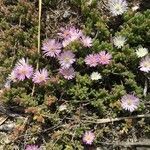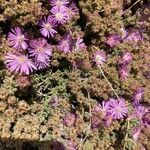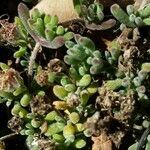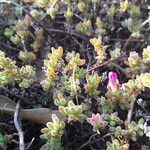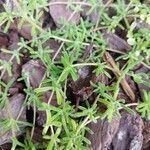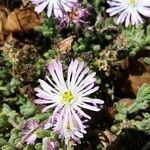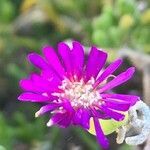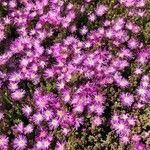Mat-forming trailing or cushion-forming subshrub. Stems much-branched, hispid, 30-100-(300) cm long. Lvs opposite or fascicled, terete, clavate, curved, obtuse, (5)-7-12 × 1.5-2.5 mm; papillae dense, rounded, glittering. Fls 1.5-2 cm diam. Calyx densely papillate; sepals 3-4 mm long. Petals spreading, purplish pink, 6-10 mm long. Stamens 3-4 mm long; filaments pink, hairy; anthers white. Stigmas 5, lanceolate, spreading, 3-4 mm long. Capsule small, 5-locular; expanding keels diverging; placental tubercles 0.
Perennial, dwarf shrublet, up to 0.2 m high, stems sprawling, young ones hispid. Leaves subterete, bladder cells glassy. Flowers solitary, bright pink with white centre. Flowering time Sept.-Dec. Capsules 5-locular.
Bladder cells on stems hair-like. Sprawling, papillate shrublet to 30 cm. Leaves subterete, shiny. Flowers solitary on short shoots, magenta with white centre. Fruits 5-locular.

